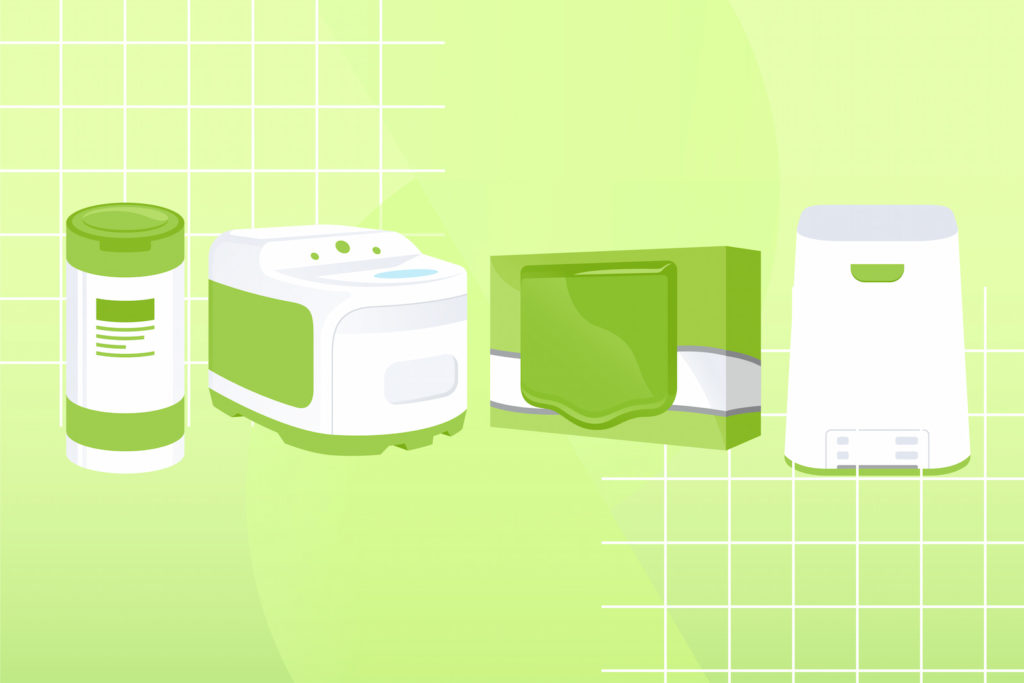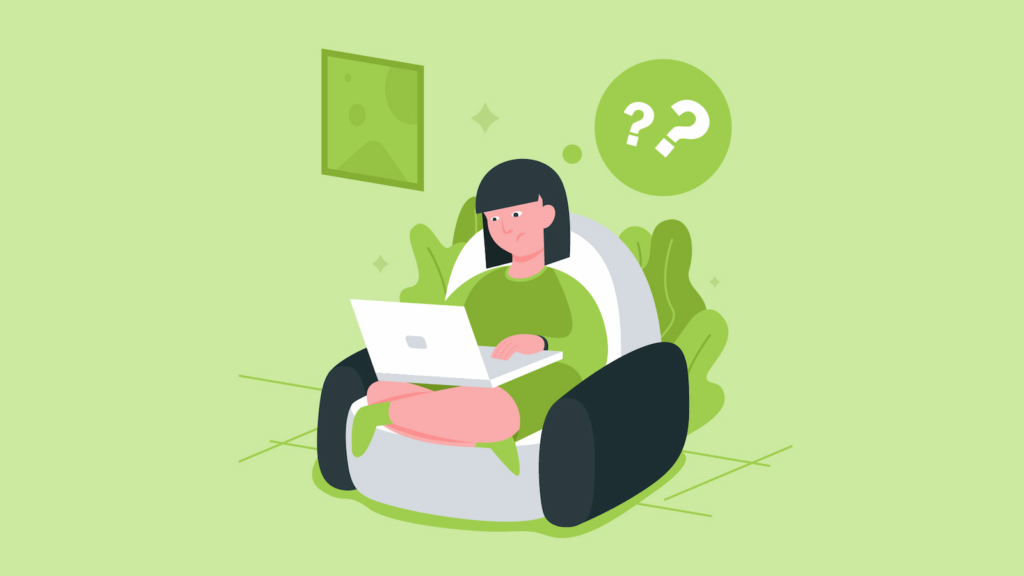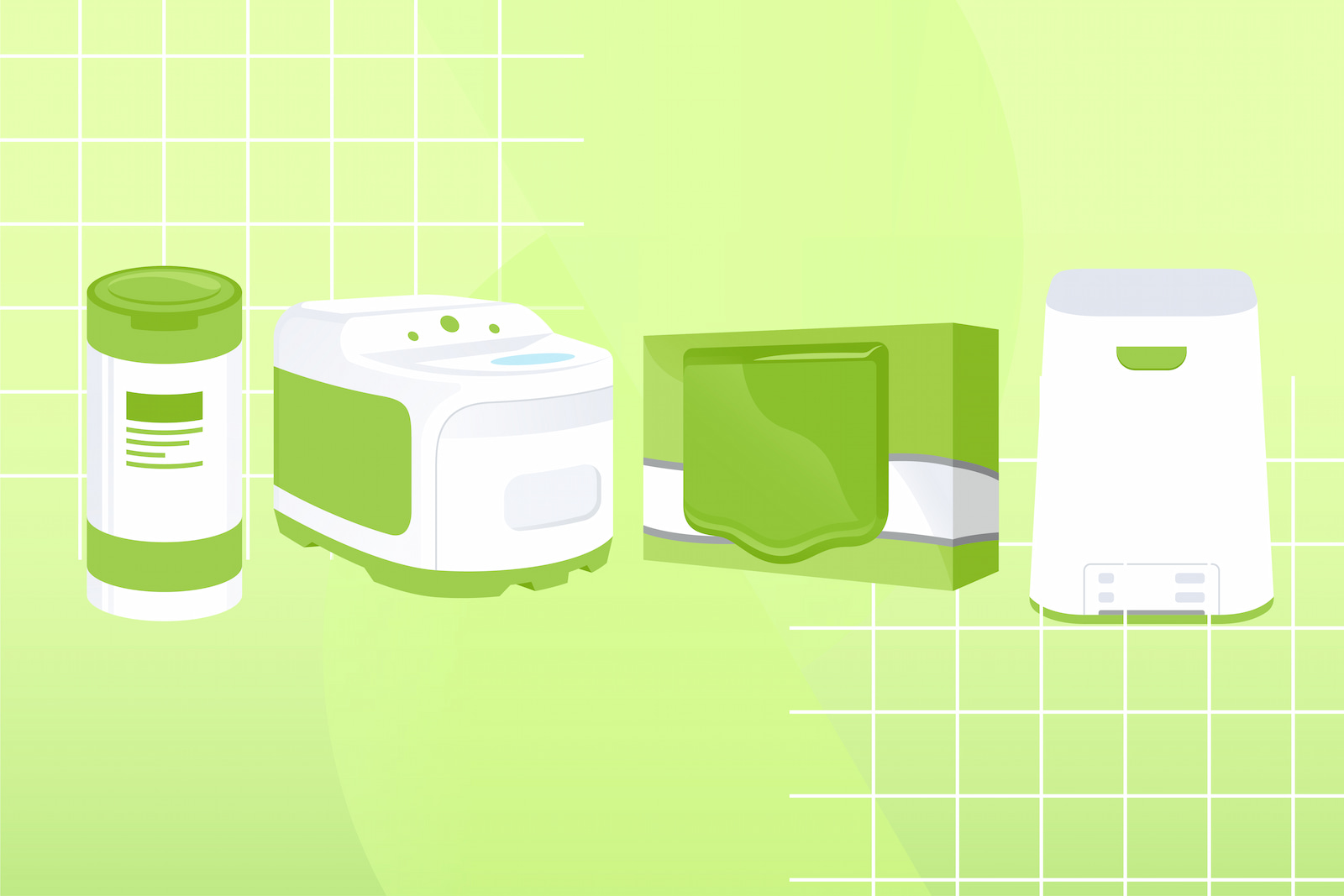CPAP cleaning machines promise easy, thorough cleaning for your CPAP parts and accessories. But are they worth the price?
Keeping your CPAP machine and its various components clean is an essential–and repetitive–part of PAP therapy.
Doing so ensures the safe operation of your equipment and reduces the risk of infections and other health concerns.

But there are machines out there that claim to be able to take care of some of these concerns for you without the need to soak tubes, change water supplies, or spend time at the sink.
A quick look at their price tags makes it clear that you’re paying for convenience, but are these popular machines worth the price?
In this guide, we’ll look at precisely what ozone or UV CPAP cleaning systems will–and won’t–do to help you decide if they’re an intelligent purchase for you.
How Do These Machines Work?
Cleaning machines typically work in one of three different ways:
- UV Light
- Ozone (also known as activated oxygen)
- Cleaning tablets
While the models that use cleaning tablets are rarer, you’ve likely seen either the Lumin UVC Sanitizing System or SoClean2 CPAP Sanitizing System before.
Both claim to offer similar results but approach things very differently.
So let’s take a look at how they manage to do what they do.
UV Lighting Sanitization
Systems like the Lumin UVC Sanitizing System use UV light to kill 99% of bacteria, pathogens, and fungi present on your CPAP parts and accessories.
Load everything into the chamber, run a five-minute cycle, and you’re done.
There’s no need to wait for parts to cool or fumes to dissipate after sterilizing, and because most use a tray-based approach, you can use it to sterilize other items such as dentures, hearing aids, and toothbrushes as well! Some people even report success using them to clean the reusable cloth masks worn as COVID-19 precautions when out in public.
Most systems also require little to no maintenance apart from keeping the outside of the unit clean with a soft, damp cloth.
Just keep in mind that these machines can only clean where the light can touch. This means that the inside of opaque tubing or smaller corners or crevices might require additional cleaning. Lumin offers the Lumin Bullet to clean tubing, however, this means more costs and more time to clean things properly.
Ozone (or Activated Oxygen) Sanitization
Systems like the SoClean 2 CPAP Sanitizing System use activated oxygen (also known as ozone) to kill 99.9% of bacteria, viruses, and mold in your mask, hoses, and reservoir.
Systems will connect slightly differently depending on their design, but most will allow you to keep your components assembled and connect them to the machine while it pumps ozone through your equipment.
This means you can’t use them to clean anything else though and might need a brand-specific adapter to connect the sanitization system to your CPAP machine.
Cleaning cycles are often longer with ozone-based systems, sometimes taking a couple of hours.
Then you must also wait for up to an hour after the process completes to ensure that all ozone has dissipated or been recaptured by the unit.
The machines don’t require much maintenance.
However, you’ll typically need to replace cartridge filters every month or two, so consider that in your overall costs.
Concerns about CPAP Cleaning Machines
A quick search for CPAP sanitization systems will yield endless debate about them.
Some reviews hype them for their ease of use; others question if they work at all.
In this section, we’ll go over some of the questions and criticisms so you can make an informed purchasing decision.
Words Are Important
While many people call these devices CPAP cleaning machines, you’ll notice their manufacturers refer to them as CPAP sanitization systems.
This highlights one of their most significant limitations.
Just because they kill 99% (or more) of bacteria, viruses, fungi, or molds doesn’t mean they do anything about the dust, mucus, saliva, mineral build-up, or other debris collecting in your hoses, CPAP mask, or other components.

They also can’t remove oils or dander from your mask pillows or help to keep your headgear smelling fresh.
Even if you use your sanitizer daily, you’ll still need to break down your equipment and give it a manual cleaning somewhat regularly to stop unsightly build-up, maintain a strong mask seal, and ensure your equipment lasts longer.
Questionable Results
None of these devices face the same level of regulation or scrutiny as your CPAP machine.
In fact, in February 2020, the U.S. Food and Drug Administration clarified that “No home CPAP cleaning devices that use ozone gas or UV light have been approved or cleared by the FDA.
The FDA has not determined whether CPAP cleaning devices are safe.
The FDA does not have evidence whether CPAP cleaning devices work to clean or disinfect CPAP equipment of germs or allergens.”
In the same release, they highlight “reports from people who use CPAPs that they experienced unexpected asthma attacks, headaches, and breathlessness after using devices claiming to use ozone gas to clean their CPAP.”

Some manufacturers, including ResMed, have also stated that their manufacturer’s warranty does not cover damage related to ozone exposure.
As such, it’s important to use due diligence when selecting a CPAP cleaning device.
Read reviews, compare options, purchase from reputable CPAP supply stores, and read all instructions thoroughly before operating the machines.
So Should You Buy One?
We stock both the SoClean 2 CPAP Sanitizing System and Lumin UVC Sanitizing System at CPAPSupply.ca.
While these machines might not accomplish anything that thorough and frequent manual cleaning and maintenance can’t–and they should never be considered a complete replacement for manual cleaning–we believe they’re an important option when it comes to accessibility and easing the burden of maintaining your CPAP equipment.
This is especially true for those who might have trouble reaching into tight corners of parts or standing for extended periods while cleaning their equipment’s various CPAP parts and accessories.

They also serve a role in helping to provide quick results between cleanings and encouraging regular maintenance as a clean CPAP system is a safe CPAP system and will typically require less upkeep in the bigger picture.
Ultimately, it comes down to costs and your personal situation.
While these cleaning systems aren’t as expensive as the CPAP machine itself, they’re expensive enough to be considered a significant purchase for many–and insurance typically does not cover them in any way.
However, if your budget allows, they can offer peace of mind and convenience, and the value of that will vary from person to person.
Summary
- CPAP cleaning machines (or CPAP sanitation systems) use different methods to eliminate germs, bacteria, moulds, and other pathogens which could cause an infection in your CPAP system.
- The FDA has not approved nor cleared any CPAP sanitization system, and results can vary between manufacturers.
- Three common sanitization methods include UV light, ozone (or activated oxygen), and cleaning tablets.
- UV light cleaners require minimal maintenance or part replacement and, depending on the design, might allow you to sanitize other small items.
- Ozone cleaners typically require filter replacement and are limited to sanitizing only your CPAP mask, CPAP tubing, and humidifier reservoirs.
- Follow all instructions to minimize the risk of personal injury or damaging your CPAP equipment during the sanitization process.
- No sanitization systems will help remove dust, mucus, saliva, mineral build-up, make-up accumulation, or hair or other debris.
- Even when using a sanitization system, manual cleaning will still be an essential part of your CPAP maintenance routines.
- Popular models include the SoClean 2 CPAP Sanitizing System and the Lumin UVC Sanitizing System.
- The cost will be the most significant factor in determining the overall value for many. While it offers convenience, it will not completely replace manual cleaning, making the price questionable for some.
CPAP Supply is Canada’s leading online CPAP supply store in customer satisfaction. Our selection of CPAP sanitizers by leading manufacturers can help supplement your CPAP maintenance routines and ensure your equipment’s safe, sterilized operation. We also carry all of the parts and accessories to keep your CPAP machine running smoothly between cleanings or when it’s time to replace disposable parts. Browse our product selection or contact us today to see how we can help you!
References:
- Verywell Health: Using the CPAP Cleaners Soclean or Lumin
- U.S. Food and Drug Administration: CPAP Machine Cleaning: Ozone, UV Light Products Are Not FDA Approved
- Healthline: CPAP Cleaning Machines: Are They Safe To Use?
- Medical News Today: How To Clean a CPAP Machine
- Sleep Foundation: How to Clean a CPAP Machine

